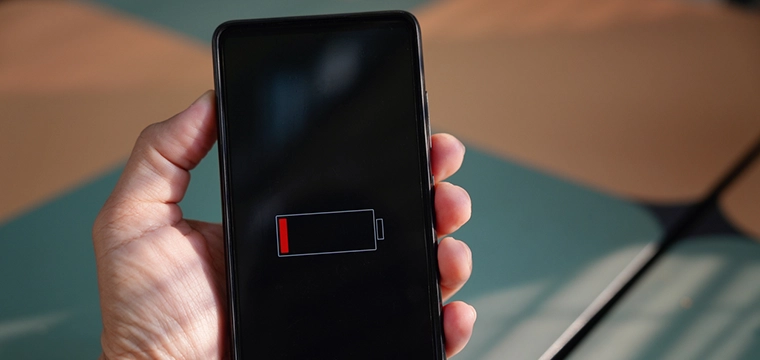
A bit of reserved juice is enough to open a dorm room door or grab a meal at the dining hall
Ever since student IDs were stored in Apple Wallet, perhaps the most frequent question was “what happens when the battery dies?” Administrators were rightfully concerned about how their students were going to buy a meal or access their dorm rooms.
The answer to the question is found in two important iOS concepts, Power Reserve and Express Mode.
When an iPhone or Apple Watch shuts down or “dies,” the battery is not completely depleted. A small amount of power is retained to enable mission critical functions. Apple calls this process Power Reserve.
Among these mission critical functions, the most important for campuses is the continued use of the mobile credential stored in the Wallet. Power Reserve maintains enough juice to conduct an NFC transaction for payments and access control.
To take advantage of Power Reserve, however, the second concept is required.
Express Mode is an option that can be turned on or off for cards stored in Apple Wallet. By default, it is set to on for student IDs and other payment cards.
Express Mode-enabled cards are read automatically when presented to a card reader, eliminating the need to wake/unlock the device or authenticate with Face ID, Touch ID, or a passcode.
Because of this, Express Mode lets cards work even when the phone has shut down and entered Power Reserve mode.
Even in Power Reserve mode, eventually the small amount of remaining juice left in the device will run out. This time is reported to be anywhere up to five hours.
According to Apple, “the NFC controller performs Express Card transactions under the same conditions as when iOS is running, except that transactions are indicated only with haptic notifications (no visible notification is shown).”
If the phone is manually powered off by the user, however, Express Mode will not work.
Obviously, Power Reserve mode will not last forever, and eventually the small amount of remaining juice left in the device will run out. This time is reported to be anywhere up to five hours. After that, even with student ID in Express Mode, transactions will cease to work.
Five hours is sufficient for someone to get back to their dorm or pay for a meal on the day the phone shuts down, but it likely won’t work the following day.
In addition to the student ID in Express Mode, a number of other functions can be performed when the device’s battery is dead. These include other cards and passes with Express Mode enabled:
To see what cards, passes, and key are available, a user can press the side button when the device needs charging. The battery icon will indicate that power is low, and text indicates available cards. With iOS 18 and above, the time is also displayed. This process will consume a significant amount of the remaining power, so its use should be limited.
Though not reliant on Express Mode, the iOS “Find My” feature can be used when the device has turned off thanks to Power Reserve. Find My lets users track lost iPhones, Apple Watches, Macs, AirPods, and even non-Apple items tagged with an Airtag.
If the phone goes into Power Reserve mode, it can still be located by Find My for up to five hours. Even after that time has expired, Find My can still provide the last known location for the device.
In Power Reserve mode, a device can still be located by Find My for up to five hours. Even after that, Find My can provide the last known location.
Find My works using the device’s ultra-wideband chip to connect to a vast network of nearby Apple devices. The other devices detect the missing phone and help pinpoint its location.
Like all these other helpful applications, using the student ID in Express Mode has proven essential to mobile credential’s success in the campus market. Without it, the answer to that most common question, “what happens if my phone is dead,” would not be an acceptable for users or administrators.




